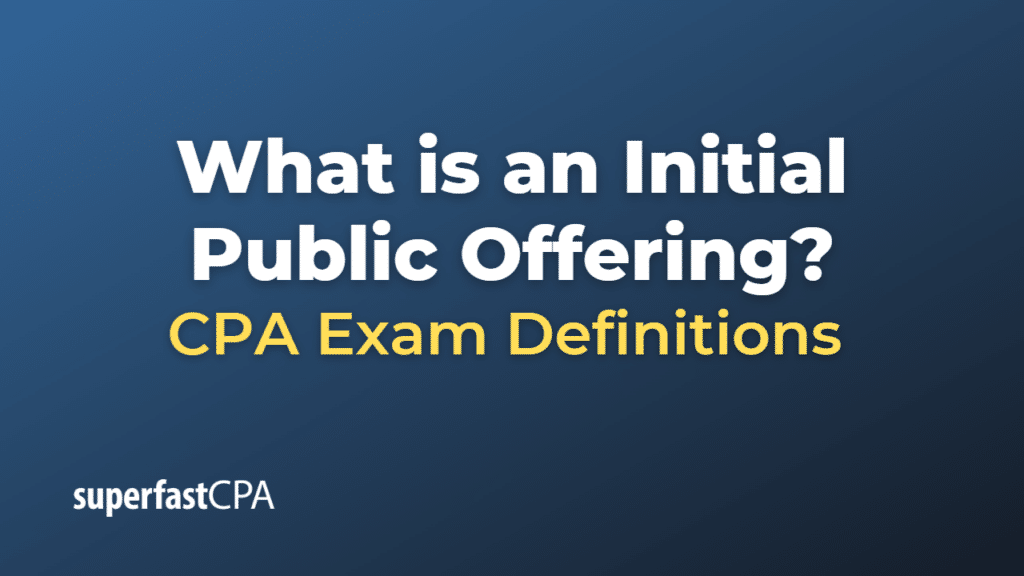Initial Public Offering
An Initial Public Offering (IPO) is the process by which a private company becomes publicly traded on a stock exchange. This is often done to raise capital for expansion, to pay off debts, or to allow existing private shareholders to sell their shares to the public.
The IPO process involves a number of steps:
- Selecting an Underwriter: The company chooses an investment bank or banks to act as the underwriter for the IPO. The underwriter’s job is to help determine the offering price of the shares, buy the available shares from the company, and then sell them to the public.
- Due Diligence and Regulatory Filing: The company and the underwriter will conduct an extensive review of the financial operations of the company, a process known as due diligence. The company will also prepare a prospectus, a detailed document describing the company’s business, financial status, and the planned use of capital proceeds. This prospectus is filed with the relevant securities regulator, such as the Securities and Exchange Commission (SEC) in the U.S.
- Pricing: The underwriter and the company agree on the price at which the shares will be sold. This is often determined by assessing investor demand, which is gauged during a “road show,” where institutional investors are presented with details about the company and the IPO.
- Selling to the Public: Once the price is set, the shares are sold on the open market. The underwriters sell their stake to the public, who can then buy and sell the shares on an exchange.
- Stabilization: For a short period after the IPO, the underwriters can buy shares to stabilize the price. This means if the price falls below the offer price, they can step in to buy shares and prevent further price falls.
Conducting an IPO is a complex and costly process. However, it can provide a company with access to a large pool of capital and offer significant benefits like increased public awareness and credibility. An IPO also provides an exit strategy for the initial investors, allowing them to realize gains on their early investment.
Example of an Initial Public Offering
A well-known example of an Initial Public Offering (IPO) in recent years was the Airbnb IPO in December 2020.
Airbnb, a company that operates an online marketplace for lodging, primarily homestays for vacation rentals, and tourism activities, decided to go public after more than a decade as a private company. Here’s a simplified overview of how the process went:
- Underwriter Selection: Airbnb selected Morgan Stanley and Goldman Sachs as the lead underwriters for its IPO.
- Regulatory Filing: Airbnb filed a prospectus with the U.S. Securities and Exchange Commission (SEC). This document provided a detailed look at Airbnb’s business, including its financials, the risks it faced, and its plans for the future.
- Pricing: Initially, Airbnb set a price range of $44 to $50 for its shares. However, due to high demand from investors, the company ultimately priced its shares at $68 on the eve of the IPO.
- Public Trading: The shares began trading on the Nasdaq exchange under the ticker symbol “ABNB” on December 10, 2020. On the first day of trading, the share price opened at $146, more than double the IPO price, indicating strong investor interest.
- Capital Raised: The IPO was a huge financial success for Airbnb. The company sold more than 50 million shares, raising approximately $3.5 billion and giving the company a valuation of around $100 billion. This was one of the biggest U.S. IPOs of 2020, and it provided Airbnb with a significant amount of capital to help fund its future growth plans.
Remember, this is a simplified example, and the IPO process can be much more complex and nuanced in reality. Each IPO is unique and can vary based on the company, the underwriters, and market conditions.













